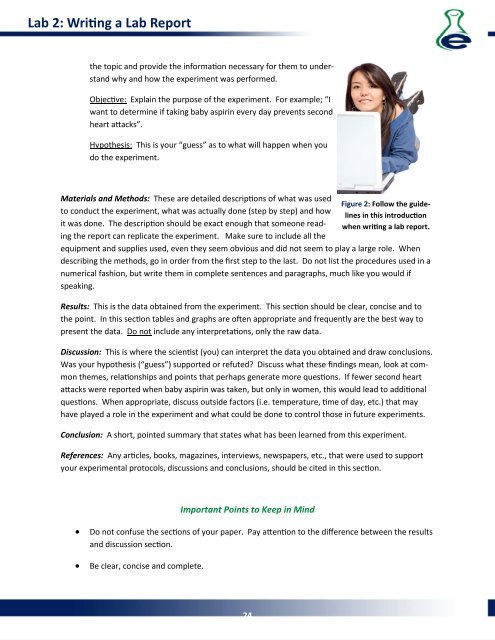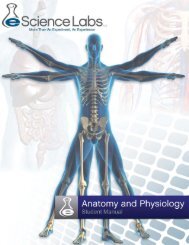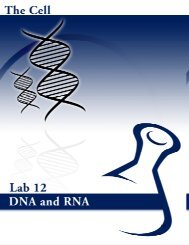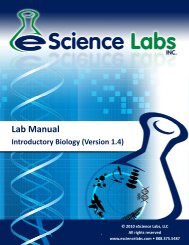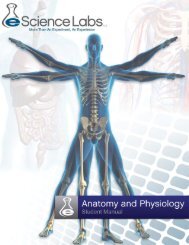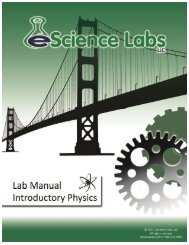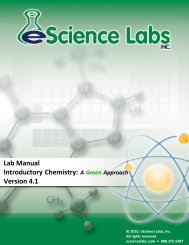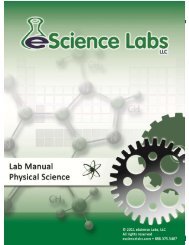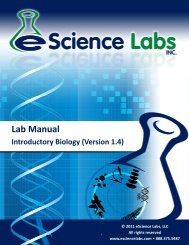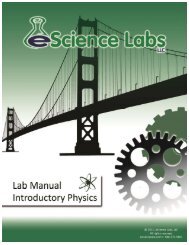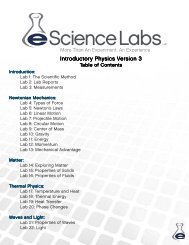Lab Manual - eScience Labs
Lab Manual - eScience Labs
Lab Manual - eScience Labs
You also want an ePaper? Increase the reach of your titles
YUMPU automatically turns print PDFs into web optimized ePapers that Google loves.
<strong>Lab</strong> 2: Wring a <strong>Lab</strong> Report<br />
the topic and provide the informaon necessary for them to understand<br />
why and how the experiment was performed.<br />
Objecve: Explain the purpose of the experiment. For example; “I<br />
want to determine if taking baby aspirin every day prevents second<br />
heart aacks”.<br />
Hypothesis: This is your “guess” as to what will happen when you<br />
do the experiment.<br />
Materials and Methods: These are detailed descripons of what was used<br />
Figure 2: Follow the guidelines<br />
in this introducon<br />
to conduct the experiment, what was actually done (step by step) and how<br />
it was done. The descripon should be exact enough that someone reading<br />
the report can replicate the experiment. Make sure to include all the<br />
when wring a lab report.<br />
equipment and supplies used, even they seem obvious and did not seem to play a large role. When<br />
describing the methods, go in order from the first step to the last. Do not list the procedures used in a<br />
numerical fashion, but write them in complete sentences and paragraphs, much like you would if<br />
speaking.<br />
Results: This is the data obtained from the experiment. This secon should be clear, concise and to<br />
the point. In this secon tables and graphs are oen appropriate and frequently are the best way to<br />
present the data. Do not include any interpretaons, only the raw data.<br />
Discussion: This is where the scienst (you) can interpret the data you obtained and draw conclusions.<br />
Was your hypothesis (“guess”) supported or refuted? Discuss what these findings mean, look at common<br />
themes, relaonships and points that perhaps generate more quesons. If fewer second heart<br />
aacks were reported when baby aspirin was taken, but only in women, this would lead to addional<br />
quesons. When appropriate, discuss outside factors (i.e. temperature, me of day, etc.) that may<br />
have played a role in the experiment and what could be done to control those in future experiments.<br />
Conclusion: A short, pointed summary that states what has been learned from this experiment.<br />
References: Any arcles, books, magazines, interviews, newspapers, etc., that were used to support<br />
your experimental protocols, discussions and conclusions, should be cited in this secon.<br />
Important Points to Keep in Mind<br />
• Do not confuse the secons of your paper. Pay aenon to the difference between the results<br />
and discussion secon.<br />
• Be clear, concise and complete.<br />
24


